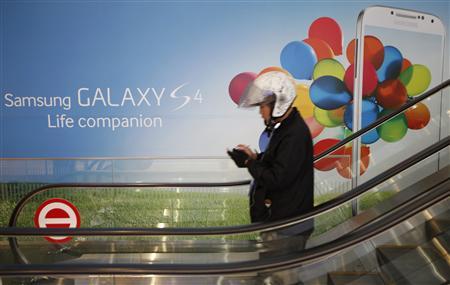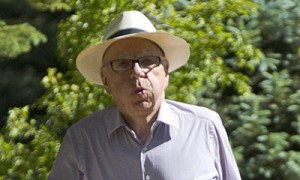 Apple Inc. AAPL +1.61% began sales of its latest iPhones, hoping for strong demand to allay concerns about the company’s position in the smartphone market.
Apple Inc. AAPL +1.61% began sales of its latest iPhones, hoping for strong demand to allay concerns about the company’s position in the smartphone market.
IPhone sales kicked off across Asia and Europe on Friday morning, with initial demand tilted heavily toward the higher end of the two models Apple is rolling out. The launch is expected to continue across the U.S.
Analysts expect Apple to sell at least as many iPhones over its launch weekend as it did last year, particularly because it is offering the devices to the Chinese market as part of the initial round of launches for the first time.
Hundreds of customers waited outside Apple stores from Tokyo to Paris, with several stores quickly selling out of versions of the high-end iPhone 5S. Shortly after opening, Apple employees at stores in Frankfurt and London told people queued up that the silver and gold versions of the high-end phone had sold out, leaving only the black version of that model available, according to those waiting in line. An Apple spokesman at London’s Covent Garden store said only that demand has been high.
The company said it would be selling iPhones in 100 countries and more than 270 mobile carriers by the end of the year.
The launch is the latest test of Apple’s product strategy, which is under attack on both the high and low ends. Apple unveiled two new iPhone models last week, but didn’t stray far from its traditional form factors and pricing. The lineup going on sale Friday includes the new flagship iPhone 5S, which includes a faster processor, a better camera and a new fingerprint scanner. It also includes a second model called the iPhone 5C, that repackaged much of the technology from last year’s model in a new colorful plastic case.
It was that phone that appeared to be selling best across Asia and Europe. Demand for the gold-colored 5S was so strong in China and Hong Kong that Apple has already asked its suppliers to increase production of that model, people familiar with the matter said. An Apple spokeswoman declined to comment.
Enthusiasm for the cheaper 5C, however, wasn’t as apparent at stores from Beijing to London.
“I think the 5C is still pretty highly priced considering it’s supposedly the low-budget version,” said Aaron Taylor, a 29-year-old IT consultant who lives in Sydney. “The 5C is basically the iPhone 5 with plastic around it.”
Lian Jiyu, a 25-year-old at the Apple store in Beijing, said he wanted the 5S over the 5C because the 5S is the first phone to be offered in gold.
“I don’t care what’s inside the device,” said Mr. Lian, who works at a local TV station. “Chinese people like gold.”
Still, the carnival atmosphere that has surrounded iPhone launches in years past continued Friday. In London’s Covent Garden, Apple employees handed out pastries and bottled water to those close to the front of the line, which stretched through the square and then snaked around the block.
“It’s an American show,” said Alexander Kurz, 35, who had lined up in Frankfurt, where Apple employees clapped and cheered when the opened the doors at 8 a.m. Many had camped out all night, leaving some streets trash strewn. “It’s like Disneyland for us out here. We’re not used to it.”
Some analysts and investors were hoping Apple would introduce more variety into the pricing of its phones. In the U.S., Apple priced the 5S at $199 with a two-year contract, or $649 without; the 5C costs $99 and $549, respectively. Since the announcements, Apple’s stock price has fallen nearly 7% from the announcement last week through Thursday’s close.
The concern, among some, is that the lineup will do little to help the company further compete against phones running Google Inc.’s Android operating system, which became the world’s most widely used software in 2011, according to research firm Gartner. The software powered nearly 77% of the smartphones sold during the first half of this year.
Apple’s chief rival is Samsung Electronics Co. 005930.SE -2.74% Ltd., which sold 71.3 million smartphones in the second quarter—more than twice Apple’s 31.9 million phones sold over the same period, Gartner said.
The South Korean technology giant has increasingly set its sights on the American market, holding lavish launch events and ramping up advertising. At the same time, Samsung and other competitors have taken share from Apple in countries like China, where Samsung smartphones can be purchased for less than $100.
Apple executives have said they intend to focus on the high end of the market. “There’s so many people that care and want a great experience from their phone or their tablet, that Apple can have a really good business,” said Apple Chief Executive Tim Cook in an interview with Bloomberg Businessweek magazine published on Thursday.
Analysts say they expect Apple to sell at least as many iPhones over its launch weekend as it has in the past. Gene Munster, an analyst at Piper Jaffray, said in a note to investors that he expects Apple to sell as many as 6 million units over the weekend, surpassing Apple’s previous record of 5 million units last year.
Some analysts believe the iPhone 5S will have constrained supplies during its launch, particularly because they believe the fingerprint sensor is harder to manufacture efficiently.
Ming-Chi Kuo, an analyst for KGI Securities in Taiwan, said in August he expected Apple would produce 5.2 million units of the iPhone 5S and nearly 8.5 million units of the iPhone 5C during this launch quarter.
But by the fourth quarter, which ends in December, he predicts Apple will ship 28 million units of the iPhone 5S and 18.7 million units of the iPhone 5C.
All told, the analyst estimates that total iPhone shipments will top 35 million units in the third quarter—a 30% increase over the same time last year—and rise to 55 million in the fourth quarter.
Further weighing on the company are concerns it has lost its competitive edge. Eddie Rivera, an airline worker from Fort Lauderdale, Fla., said he and his wife used to be fans of Apple’s iPhone, having bought multiple models over the years regardless of whether or not they needed them.
“We just felt we needed to have the latest one, that’s how strong we felt about it,” he said. After hearing about the iPhone 5S and iPhone 5C, he said neither is innovative enough to spur him to buy. “We will pass on this one and start researching Samsung’s selections of phones.”
—Ross Kelly and James Glynn in Sydney, Lorraine Luk and Juro Osawa in Hong Kong, Wayne Ma in Beijing, Miho Inada and Mayumi Negishi in Tokyo, Simon Zekaria and Dipti Kapadia in London, Christopher Lawton in Frankfurt and Inti Landauro in Paris contributed to this article.
AP





































